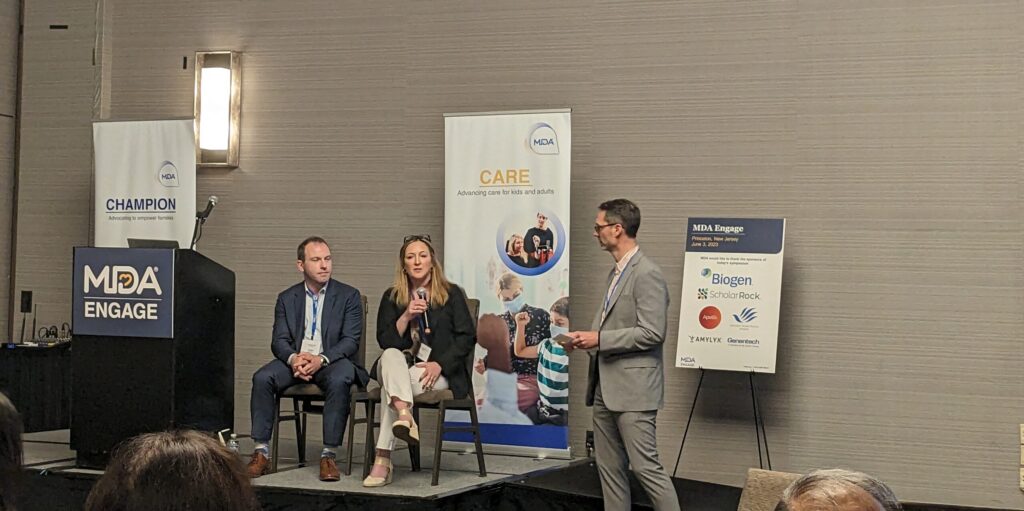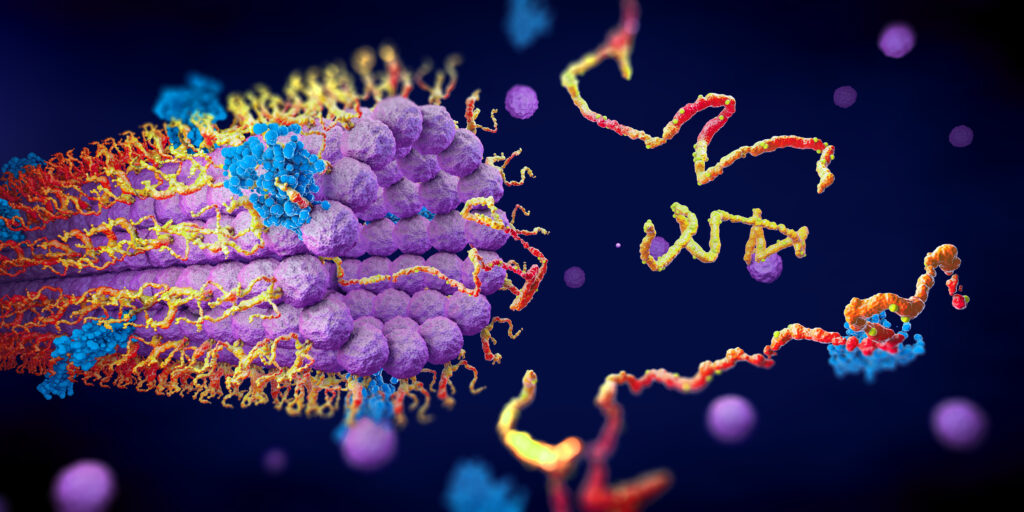
Q&A: Understanding Congenital Muscular Dystrophy
By MDA Staff | Thursday, February 16, 2023
Congenital muscular dystrophy (CMD) is a group of progressive neuromuscular diseases that affect individuals at or shortly after birth. Sometimes referred to as having “floppy baby” or “floppy infant syndrome,” newborns with CMD have muscle weakness.
As the disease progresses, people living with CMD often experience reduced mobility, breathing difficulty, respiratory infections, and shorter lifespans. In addition, those with CMD often develop joint contractures — a stiffening of the joints.
To learn more about CMD, we spoke with Dean Burkin, PhD, professor of pharmacology and pediatrics at the University of Nevada, Reno, School of Medicine.
What conditions fall within the CMD category?

Dean Burkin, PhD
So far, about 30 different CMDs have been identified. They are caused by mutations in genes that encode proteins located in the extracellular matrix (a structure of connective tissues that plays an important role in cell growth, cell movement, and other functions), receptors on the surface of muscle cells, or proteins within cells including the nucleus (the component within a cell that contains the chromosomes).
CMDs include defects in:
- Extracellular matrix proteins, including laminin (laminin-α2-related CMD) or collagen (collagen VI-related CMD or collagen XII-related CMD)
- Cell receptors integrin α7 and α9 (ITGA7-related CMD or ITGA9-related CMD), and α-dystroglycan (dystroglycanopathies and forms of limb-girdle muscular dystrophy)
- Intracellular proteins (SEPN1-related myopathies and Titin myopathy)
- Nuclear proteins lamin A/C (laminopathy or LMNA-related CMD)
What does this group of diseases have in common?
Advances in whole genome DNA sequencing, which reveals an individual’s entire genetic code, have led to the identification of numerous genes that, when defective, cause CMD. Although disease presentation in individuals can be very different, the CMDs can be grouped broadly according to the location of the defective protein.
How does CMD affect the people who live with it?
Children with CMD often don’t meet expected developmental milestones. Individuals with CMD frequently lose or never develop the ability to walk and require mobility assistance at a young age. They often experience weakened respiratory muscles and may require ventilator assistance to breathe. Respiratory infections are common in people affected by CMD. Some forms of CMD negatively impact heart function. CMD often causes swallowing difficulty and weight gain, which can lead to the need for special diets. CMD may also affect neurological, gastrointestinal, cardiovascular, pulmonary, and musculoskeletal systems.
What is the current standard of care?
The standard of clinical care is dependent on the type of CMD and often requires a team of caregivers and providers. Care is currently aimed at managing symptoms. This may include the use of ventilators for breathing problems, antibiotics to treat respiratory infections, mobility devices, monitoring heart function, physical therapy, speech therapy, and/or surgical interventions to correct severe spinal curvature.
Have there been any recent advances in treatment?
A phase 1 clinical trial (the CALLISTO trial) with a small-molecule drug called Omigapil from Santhera Pharmaceuticals was completed for LAMA2-related CMD and collagen VI-related CMD. Omigapil acts to prevent muscle loss, and the study indicated it was safe and well tolerated. The drug has yet to move to phase 2 clinical trials, but this trial has provided information on the design of future clinical trials and the selection of potential outcome measures for these CMDs.
Are there any other promising therapies on the horizon?
There are many therapies being studied that may have applications across the CMDs. Most treatment strategies for the CMDs are still in the preclinical (animal model) testing stage.
Exciting potential therapies for the CMDs include gene therapy, in which the target gene is small and can be packaged into current viral delivery systems. Another is gene editing, using a strategy called CRISPR-Cas9. This holds the promise of personalized medicine to correct individual genetic defects and restore gene function.
Stem cell therapies can be used to promote muscle repair or for use in gene therapy/editing. Exon-skipping and antisense technology could inhibit defective gene expression and is an exciting approach for many CMDs.
Protein replacement therapy has shown advances for LAMA2-related CMD and aims to deliver the missing or defective protein to affected tissues. Designer linker proteins, which are hybrid molecules designed to stabilize muscle cells, are also under development.
Finally, small molecules and FDA-approved medicines developed for other diseases could prove to slow disease progression or prevent muscle cell damage for many CMDs.
Next Steps and Useful Resources
- Browse our Diseases A-Z library of disease-specific content.
- Learn about gene therapy and how drug developers are listening to the neuromuscular disease community’s perspective on clinical trials.
- Read more of the Quest Spotlight series on rare diseases.
Disclaimer: No content on this site should ever be used as a substitute for direct medical advice from your doctor or other qualified clinician.




